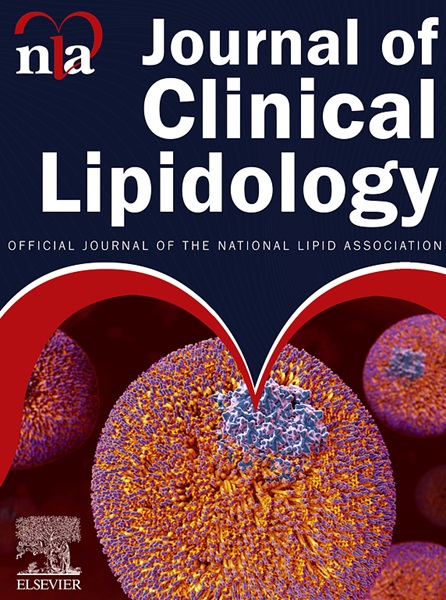Sitosterolemia caused by compound heterozygosis of 2 allelic variants in the ABCG5 gene—21 years of follow-up
IF 4.6
3区 医学
Q2 PHARMACOLOGY & PHARMACY
引用次数: 0
Abstract
BACKGROUND
Sitosterolemia is a rare autosomal recessive disease characterized by elevated phytosterol levels in the bloodstream and tissues due to increased absorption and reduced biliary excretion. This condition arises from mutations in one of two genes, ABCG5 or ABCG8, located on chromosome 2p21.
OBJECTIVE
We report the case of a patient, and his first-degree relatives, diagnosed with sitosterolemia at the age of 23.
METHODS
The patient was monitored for 21 years, during which he was advised to adopt a low-plant sterol diet and was treated with ezetimibe.
RESULTS
Over this period, he experienced resolution of splenomegaly and thrombocytopenia, stabilization or reduction in xanthoma growth, and absence of cardiovascular events. Despite these clinical improvements, plasma concentrations of campesterol and β-sitosterol remained above normal levels. Genetic analysis identified two variants in the ABCG5 gene (NM_022436.3): c.64C>T:p.(Gln22*) in exon 1 (rs781098379), a known pathogenic variant, and c.1217G>A p.(Arg406Gln) in exon 9 (rs375364242), described as likely pathogenic.
CONCLUSION
We propose that the exon 9 variant is indeed pathogenic.
ABCG5基因中2个等位变异的复合杂合引起的谷固醇血症-21年随访
背景:谷甾醇血症是一种罕见的常染色体隐性遗传病,其特征是由于吸收增加和胆汁排泄减少导致血液和组织中植物甾醇水平升高。这种情况是由位于2p21染色体上的ABCG5或ABCG8两个基因中的一个突变引起的。目的:我们报告一例患者和他的一级亲属,在23岁时被诊断为谷固醇血症。方法:对患者进行为期21年的监测,在此期间建议患者采用低植物甾醇饮食,并给予依折麦布治疗。结果:在此期间,他经历了脾肿大和血小板减少的解决,黄瘤生长稳定或减少,没有心血管事件。尽管这些临床改善,血浆中油菜甾醇和β-谷甾醇的浓度仍然高于正常水平。遗传分析鉴定出ABCG5基因(NM_022436.3)的两个变异:已知致病变异1外显子(rs781098379)的c.64C>T:p.(Gln22*)和9外显子(rs375364242)的c.1217G> a p.(Arg406Gln),被描述为可能致病。结论:我们认为外显子9变异确实具有致病性。
本文章由计算机程序翻译,如有差异,请以英文原文为准。
求助全文
约1分钟内获得全文
求助全文
来源期刊
CiteScore
7.00
自引率
6.80%
发文量
209
审稿时长
49 days
期刊介绍:
Because the scope of clinical lipidology is broad, the topics addressed by the Journal are equally diverse. Typical articles explore lipidology as it is practiced in the treatment setting, recent developments in pharmacological research, reports of treatment and trials, case studies, the impact of lifestyle modification, and similar academic material of interest to the practitioner.
Sections of Journal of clinical lipidology will address pioneering studies and the clinicians who conduct them, case studies, ethical standards and conduct, professional guidance such as ATP and NCEP, editorial commentary, letters from readers, National Lipid Association (NLA) news and upcoming event information, as well as abstracts from the NLA annual scientific sessions and the scientific forums held by its chapters, when appropriate.

 求助内容:
求助内容: 应助结果提醒方式:
应助结果提醒方式:


